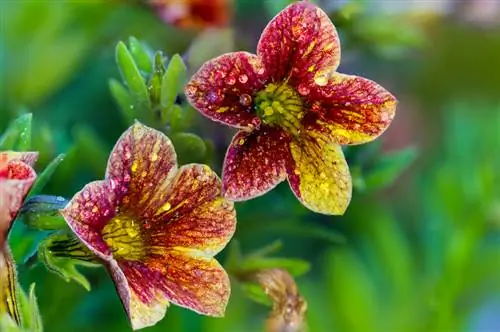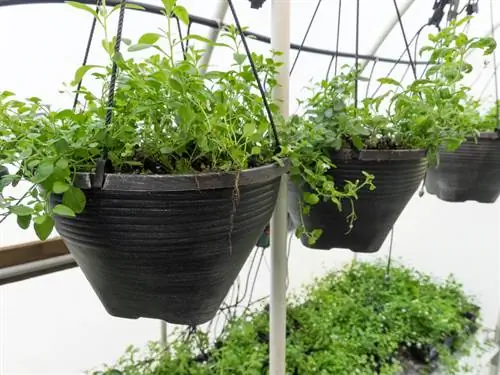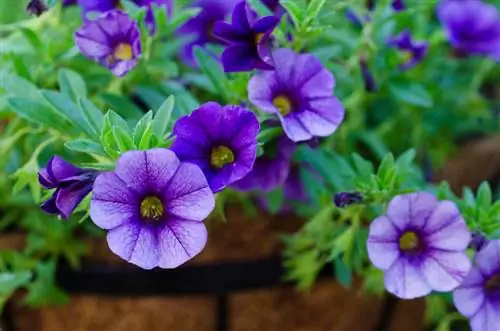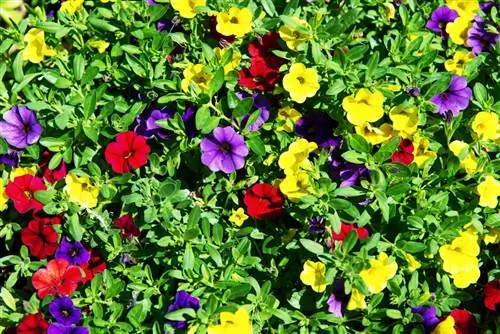- Author admin [email protected].
- Public 2023-12-16 16:46.
- Last modified 2025-01-23 11:20.
The attractive magic bell (Calibrachoa) is not just coincidentally reminiscent of the related plant family of petunias. The beautiful balcony and terrace plants, with their many small flowers, are far less sensitive to wind and rain than the larger petunias, but they are not completely hardy.
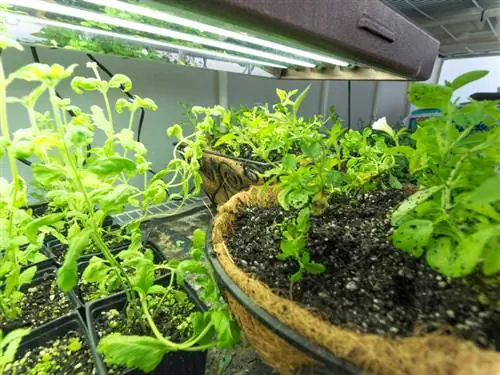
Are magic bells hardy?
Magic bells (Calibrachoa) are not hardy, but can be overwintered in frost-free winter quarters. Shorten the plants to a shoot length of 10 cm and place them in a bright, cool place with temperatures below 14°C. Water moderately with low-lime water.
South American flower dream with pronounced sensitivity to frost
The subspecies of the plant genus Calibrachoa, which are available in many different flower colors, originally come from Brazil, so they usually thrive particularly well in a sunny and warm location. While the grateful balcony flowers can cope well with high heat with sufficient water supply, they are far less resistant to cold temperatures. Plants grown on the windowsill should therefore only be moved outside after the Ice Saints and should first be acclimated to direct sunlight for a few hours. The sun-hungry magic bell is an annual in Central Europe without protective measures and does not survive the winter outdoors.
Attempts at overwintering can be worthwhile with magic bells
Contrary to the belief that magic bells can only be cultivated as annuals, some gardeners have reported successful overwintering of their richly flowering protégés. To do this, the plants should be shortened in autumn to a shoot length of around 10 centimeters. Calibrachoa have the best chance of overwintering if they are placed in a bright place in a winter garden or room where the temperatures are frost-free but do not rise above 14 degrees Celsius. Dry damage can be prevented by regular, well-dosed watering with low-lime rainwater. In addition, the plants should not be fertilized during the winter.
The propagation of the magic bell for the following year
When the Ice Saints are over in spring, there are various ways to enrich the garden with the beauty of the magic bells again:
- through new plants from garden shops
- by sowing
- Obtaining offshoots from cuttings of overwintered specimens
For growing from seeds, the seeds collected in autumn or purchased commercially are grown in bowls on the windowsill from January onwards. These should be covered with cling film so that a stable, high level of humidity can be maintained underneath. Since the magic bell relies on a slightly acidic substrate, only petunia or rhododendron soil and low-lime water (preferably rainwater) should be used when growing.
Tip
Even in winter quarters, you should check the magic bell for possible pest infestation with aphids or whiteflies so that you can quickly take countermeasures if necessary.



